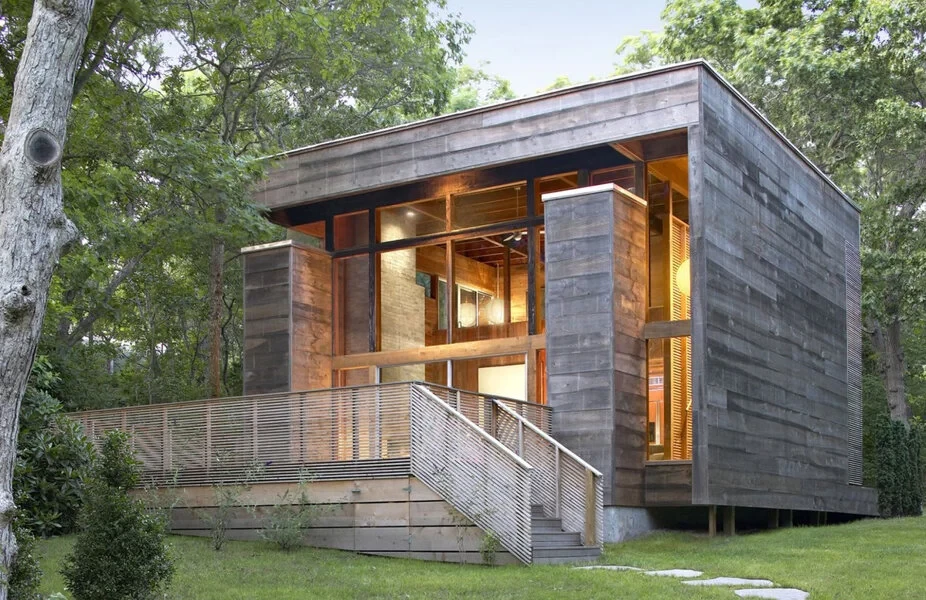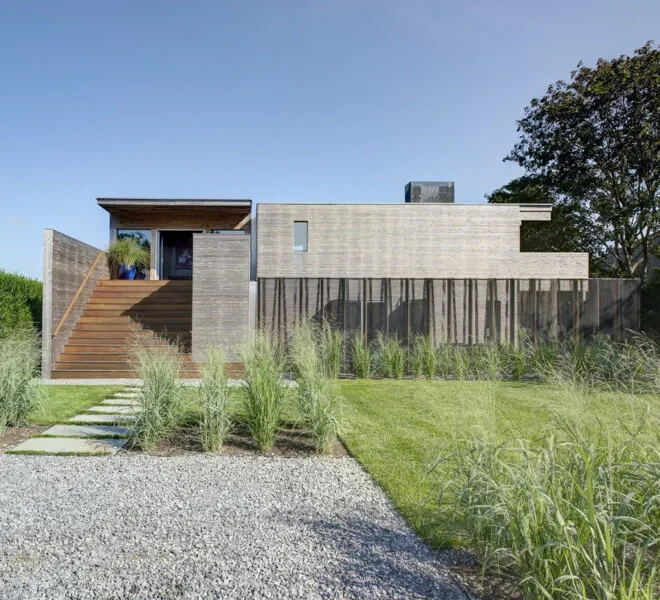One of the most prominent architectural figures of the 20th century, Harry Bates was instrumental in the design of the modernist wood-and-glass beach houses that became popular along the East Coast in the 1960s and 1970s. Along with his early partner, Dale Booher, Bates was a founder of Long Island modernism, which included architects such as Horace Gifford, Robert Rosenberg, Norman Jaffe, Peter Blake, and Julian and Barbara Neski. However, Bates did not give in to the waning interest in the modernist beach house that occurred in the 1980s.

Instead, he continued to design simple geometries, which began to look less plain and more like a refreshing respite from fussiness and pretense by the millennium. In the late 1990s, Bates took on a talented young architect named Paul Masi to work with him, who eventually became his partner. Bates Masi + Architects began Bates' second career, in which he would not only take pleasure in the revival of interest in his early work but also produce new work that built on the foundation of the old.

Some of the finest homes of the twenty-first century in eastern Long Island's Hamptons were designed by Bates and Masi. While they were almost without exception bigger and more luxurious than the houses that first made Harry Bates famous, they had the same clarity and the same love of simple geometries that marked Bates's architecture from the beginning. Even though almost every house held to Bates’s preference for a limited palette of materials, the materials themselves were often richer and more subtle than the ones in his earlier work.

Their attention to detail was more meticulous, sophisticated, and occasionally inventive; for example, Bates and Masi's use of Cor-ten steel in conjunction with cedar siding and screens, or the house that featured copper shingles. The consistent aesthetic did not result in identical designs, just like in Bates's earlier homes. Everything he built, from his first to his last, followed the same design principles. However, that blueprint could produce anything from a compact glass and cedar cabin in the woods to a palatial villa of steel, mahogany, and glass that floats above the dunes.

Bates was one of the great gentlemen of the architectural profession throughout his life and work. He was enthusiastic about modernism but never let it control him, and he never gave in to ideology or dogma. His approach to design was about capturing the essence of an idea, which he did so well with his simple geometries, limited palette of materials, and love of primal forms. Bates never saw his second act as a chance to replicate his earlier work; he was as interested in learning from Masi as Masi was in learning from him. Bates ended his career as he had begun it, designing a small house for himself, this time in Florida, where he lived out the rest of his days.